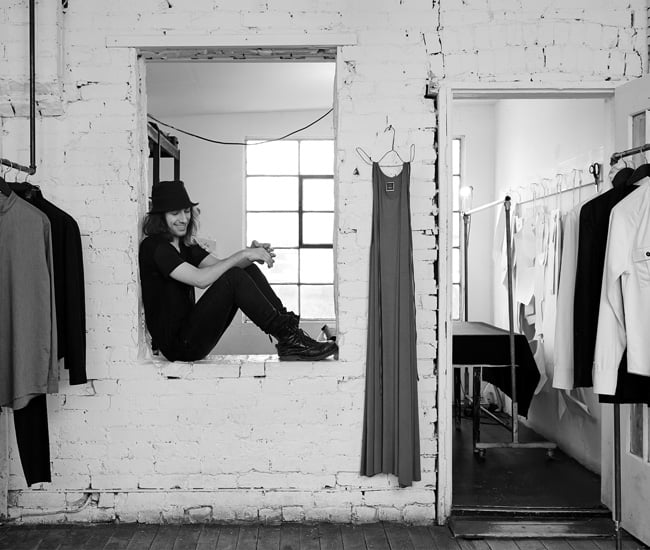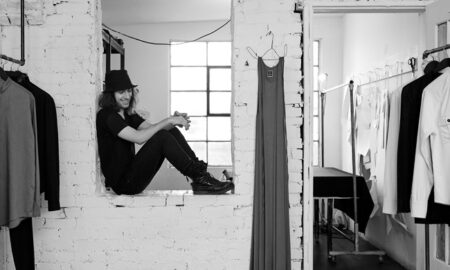Fashion File: Break On Through


A menswear designer surpasses boundaries
Upon entering Michael Thomas Bálint’s second-floor retail/studio space on Queen West, one of the first things you see is a ’60s-era houndstooth jacket hanging beside his cutting table. His Hungarian grandmother, a seamstress who made formal suit jackets and dresses for a Budapest couturier in the ’40s, drafted the garment—a familiar retro form. As a boy, Bálint learned to put needle to thread from her, and today her enduring patterns serve as the inspirational nucleus of his aesthetic and creative raison d’être.
At first glance, the connection between Bálint’s black minimalist menswear, with bold lines and striking silhouettes, and his grandmother’s craft is not readily apparent. But he often replicates and retools her mid-century patterns—adjusting pocket placement, softening shoulders and adding brass buttons—and he constructs his in raw silk and wool from the U.K. and Italy, just as she would have.
A career in fashion wasn’t a foregone conclusion for the 29-year-old designer; unlike many of his contemporaries Bálint does not have formal training. But he did spend three years at OCAD U studying sculpture—a discipline that lives on in many of his subtly androgynous pieces that seem to hang off their forms with deliberate ease. “I began making clothing to bring joy to myself, much like my grandmother did,” he says.
Clothing as a career began in 2009, when one of his shirts, constructed with two tucks on either side of the collar to create volume and drape, caught the eye of an avant-garde Yorkville boutique owner. Bálint continued to grow (and sell on commission) his collection of masculine forms, with such feminine flourishes as nipped waists, pleating and asymmetrical lines. He has since shown at Toronto Fashion Week and New York’s Capsule Show. When Europe beckoned, he took to the runway in Paris. His clothing now retails in Austria, Germany, Italy and Japan.
Five years on, Bálint’s sculptural leanings remain intact, and his handmade designs are evolving with the market. Coming up with fresh ideas each season, he jokes, involves making “horrible mistakes” and “destroying really expensive fabric.” The influence of his grandmother’s coat continues to loom, however, and though he’s shifting from all-black to ivory, charcoal, and even some patterns, he continues to retain timeless silhouettes. “I like to think they could have been around 100 years ago,” he says, “and will still be around 100 years from now.” Much like an inherited passion for sewing. thomasbalint.com
Originally published in our Guide 2014 issue.










